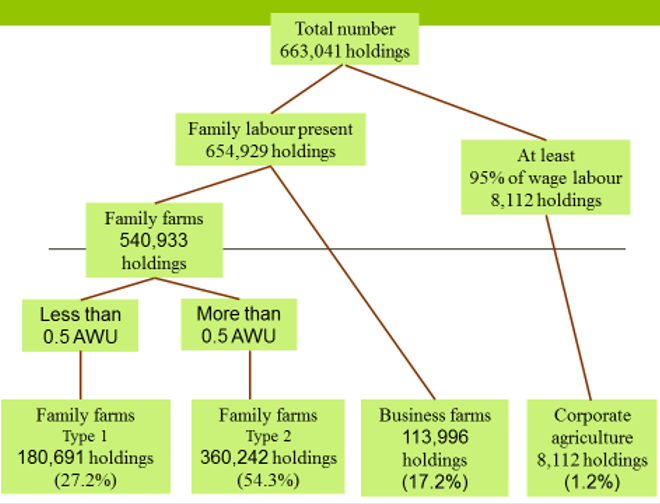Expert Meeting on Farm Typology January 2018

The Expert Meeting on Farm Typology was held on 25 and 26 January 2018 at FAO Headquarters in Rome. WAW coordinator Pierre-Marie Bosc spoke on WAW’s experience of farm typology, based on the work carried out by national teams during the WAW pilot programme in El Salvador, Madagascar, Niger, Senegal, Tunisia and Viet Nam.
Limitations of current agricultural information systems:
• The current focus is sectoral and on the economic dimension of agricultural activity.
• The social units – the families – behind the majority of farm holdings are poorly documented.
• Non-agricultural activities and incomes are poorly documented and not included in sectoral analyses.
• Farmers’ organizations are disconnected from information systems.
How can WAW help change this?
• WAW offers a comprehensive information system linking the structure of farm holdings and their performance.
• WAW takes a comprehensive view of agricultural development, linking the social and economic dimensions of farming and placing particular emphasis on family farming, to better inform social protection policies and the provision of public services (such as access to water and sanitation).
• WAW’s methodology considers the diversity of farming units, especially family farming, to establish typologies that pinpoint specific targets for investment.
• WAW adopts an inclusive approach to family farming that takes into account agricultural and non-agricultural income to avoid sectoral exclusion.
• WAW breaks down the synthetic barriers between subsistence and commercial farming by considering the self-provision of food as a performance indicator.
Changing the perception of farming
• WAW’s methodology puts farming units at the core of its information system, be they family farms or industrial farming enterprises.
• WAW offers a new vision of self-provision that goes beyond the traditional perception of subsistence versus commercial farming.
• WAW’s methodology breaks down sectoral barriers with the inclusion of non-farm activities and strategies.
• WAW looks at a range of diversified assets that even small farms can work to increase.
• WAW’s performance indicators are in line with the SDGs (natural resources, self-provision, sustainable food production and agro-ecology), with a particular focus on labour and other family activities.
The first step in farm typology is broad categorization. Identification of farm types is based on the nature of farm labour (family versus permanently hired) and control of capital (assets).
The second step is to identify farm types within each broad category using asset types based on those of the Sustainable Rural Livelihoods framework: natural, financial, physical, human and social.


Why do we use labour as an identifying variable?
• Labour is the main driver of agriculture worldwide.
• Labour is a key element that distinguishes family farming, including family business farming, from other categories of farm.

